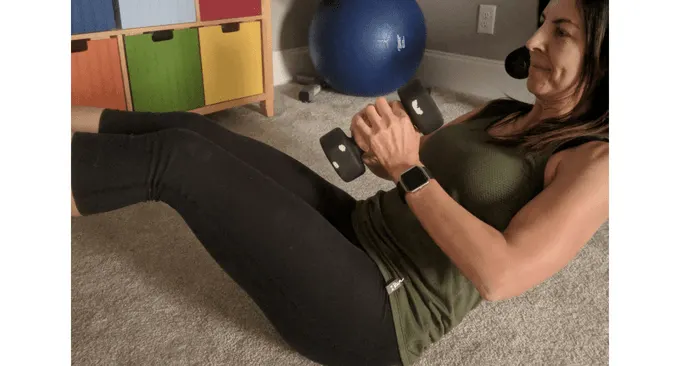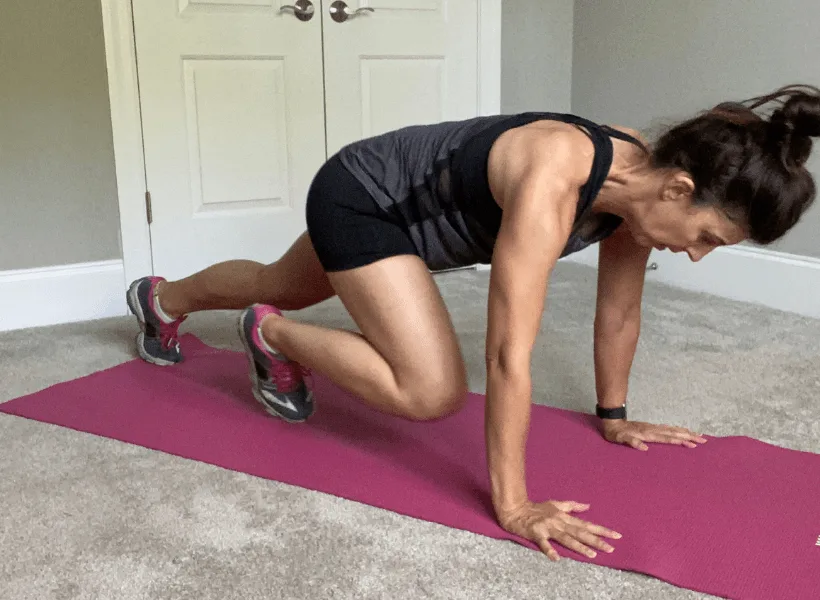Backward walking, often seen as a simple novelty or a reverse gear for humans, is actually more than just walking in the opposite direction. It is a practice that can unlock a range of health and fitness benefits that are not always achieved through traditional forward walking. The motion requires different muscle engagements and coordination, challenging the body in unique ways. While it may seem counterintuitive to locomote in a direction opposite to our visual field, this form of movement can contribute to improved balance, muscle symmetry, and proprioception.
Integrating backward walking into regular exercise routines is becoming increasingly popular among athletes, rehabilitation patients, and fitness enthusiasts alike. Not only does it add variety to workouts, but it also has specific applications for improving gait and rehabilitation outcomes. That being said, it is important to approach this practice with a proper understanding of its mechanics, potential benefits, and considerations. Although enthusiasm for backward walking is growing, it is essential to be mindful of one’s environment and to gradually build up the skill to avoid injury.
Key Takeaways
- Backward walking can improve balance and proprioception.
- It is useful for both athletic training and rehabilitation.
- Careful progression and awareness of surroundings are crucial when practicing backward walking.
The Mechanics of Backward Walking
Backward walking, also known as retro walking, is a variant of walking where one moves in the reverse direction. This movement requires specific techniques for safety, engages muscles differently than forward walking, and relies heavily on balance and coordination due to reduced vision.
Technique and Safety
The technique for backward walking prioritizes safety due to the reduced visibility of the path behind the walker. Vision is compromised, making it essential to focus on the environment’s layout before beginning. The technique includes small steps and a constant scanning of the immediate area for obstacles. Safety can be improved by practicing in a hazard-free environment and considering the use of a spotter or mirror to learn spatial relations and proprioception, or body awareness, which are crucial for navigating without visual cues.
Muscle Activation and Usage
Backward walking activates the lower extremity muscles differently than forward walking. The quads, hamstrings, and hip flexors all experience shifts in usage. During backward walking, the knee extensors, particularly the quadriceps, play a more significant role in the deceleration phase of the stride. Muscle activation is typically calculated using electromyographic analysis, reflecting increased muscle strength and endurance building due to the altered gait cycle.
- Quadriceps: Stabilization during leg lift and deceleration upon landing
- Hamstrings: Greater involvement in forward propulsion
- Hip Flexors: Engage to pull the leg back
Balance and Coordination
Balance and coordination are crucial for backward walking, as individuals must adapt to limited visual input and a reverse gait. This form of walking challenges the body’s sense of balance, demanding heightened coordination and gait control. It requires a refined sense of body coordination and proprioception—the ability to sense the position of one’s body parts in space. Regular practice can improve these aspects, potentially leading to better balance and gait in all movements.
Backward Walking in Health and Fitness
Backward walking, also known as retro walking, is gaining attention as a beneficial exercise with numerous health and fitness advantages, ranging from improved cardiorespiratory fitness to better posture and pain management.
Cardiorespiratory and Physical Fitness
Incorporating backward walking into a workout regimen can lead to improvements in cardiorespiratory fitness. Studies indicate that this form of exercise can decrease oxygen uptake and heart rate, suggesting an increase in aerobic capacity. It even serves as an attractive alternative to traditional forward walking, possibly enhancing physical performance with a slower walking pace resulting in lower perceived exertion.
Pain Management and Posture
Engaging in backward walking exercises can contribute significantly to reducing back pain and improving posture. Individuals experiencing lower back pain or knee pain might find that this mode of exercise reduces pain intensity, partly because it alters the stress placed on leg muscles and joints. Proper alignment encouraged by backward walking can lead to an overall improvement in posture.
Weight Management and Body Composition
Beyond its effects on fitness, backward walking may contribute positively to weight management. Its unique demands on the metabolism potentially increase energy expenditure. Consequently, this can help in burning more calories, aiding in the maintenance of a healthy weight, and potentially reducing body fat percentage when included as part of a regular fitness routine.
Flexibility and Strength Building
This exercise also has the potential to build strength and increase flexibility. The action of walking backward forces the quadriceps muscles to engage differently than they do during forward walking, leading to potential increases in muscle strength. Moreover, the dynamic movements involved can enhance muscular flexibility.
Benefits for Osteoarthritis
Backward walking is particularly beneficial for individuals with osteoarthritis, especially those with knee osteoarthritis. Engaging in this exercise can lead to a reduction in functional disability and an improvement in joint health. The shift in the way muscles and joints are used during backward walking may alleviate the stress on affected areas and provide relief.
Backward Walking Practice Settings
Integrating backward walking into various settings can enhance lower body strength and walking technique, while being mindful of safety and comfort. These settings range from outdoor spaces to controlled gym environments, each with specific considerations for hazards and benefits.
Outdoor Walking and Track Use
Backward walking on a track provides a controlled environment with a flat, predictable surface, making it safer for those practicing this unconventional technique. Participants should start at a slow speed to maintain balance and prevent knee injuries. Tracks are conducive for individuals stepping out of their comfort zone while having visible boundaries that reduce the risk of harm. However, walkers should be cautious of other track users to avoid collisions.
Treadmill and Gym Environments
In a gym setting, a treadmill with handrails is advantageous for backward walking as it affords practitioners the option to steady themselves, thus minimizing the likelihood of falls. By using a treadmill, one can control the incline and pace, with a recommendation to start at slow speeds. During treadmill use, focus should be on observing proper walking technique and maintaining balance, taking care to position the big toe correctly to avoid missteps.
Structured Training Programs
Structured training programs may incorporate backward walking as an integral part of a comprehensive fitness routine. Such programs, ideally developed with insight from a randomized controlled trial or the compendium of physical activities, quantify the intensity of exercise in METs (Metabolic Equivalent of Tasks). Training programs geared toward backward walking are tailored to improve walking speed and endurance without causing lower body strain.
Assessment and Research
In assessment and research settings, backward walking is often scrutinized to identify its safety and efficacy in recovering from or preventing knee injuries. Through a meticulous analysis of walking technique and muscle engagement, these studies aim to inform therapeutic practices. Researchers may apply backward walking protocols within randomized controlled trials to measure improvements in balance and mobility post-intervention.
Implementing Backward Walking
When incorporating backward walking into an exercise regimen, it’s essential to focus on safety and proper technique to improve gait and enhance physical performance. This practice pushes the boundaries of one’s comfort zone while contributing to a healthy weight and cardiopulmonary fitness.
Starting a Backward Walking Routine
To begin, one should find a safe, obstacle-free space to walk backward comfortably and avoid the risk of tripping. Initially, this could be a short distance such as the length of a room or hallway. It is vital to start slow, focusing on walking technique more than speed or distance. The arms should gently swing opposite the legs, and one should turn the head occasionally to check for obstacles.
- Safety Tip: Always ensure the path is clear, and consider having a spotter when first starting out.
Incorporating into Existing Workouts
Backward walking can be seamlessly added to one’s fitness routine by alternating it with forward walking or running intervals. For those who frequent the gym, it can be incorporated on the treadmill at a reduced speed. The goal is to engage different muscle groups, challenging the body’s usual movement patterns.
- Workout Integration:
- Treadmill: Integrate 1-2 minutes of backward walking for every 5 minutes of forward walking.
- Outdoor: Use backward walking as a cool-down exercise post-run.
- Circuit Training: Add a backward walking loop between other exercise stations.
Progress Tracking and Goal Setting
Setting clear goals and tracking progress are necessary steps toward improving fitness outcomes through backward walking. One might measure the increase in duration or frequency of backward walking segments within their workouts, aiming for gradual improvement. Maintaining a consistent schedule helps in elevating one’s cardiopulmonary fitness and overall physical performance.
- Goal Setting:
- Short-Term Goal: Walk backward for 2 minutes without stopping.
- Long-Term Goal: Incorporate 10 minutes of backward walking in every exercise session.
- Progress Tracking: Use a journal or fitness app to note improvements in stability, stamina, and walking technique.
Common Considerations and Precautions
When engaging in backward walking, it is essential to prioritize technique and safety to minimize risks such as knee injuries and falls. Proper posture, controlled walking pace, and enhanced body awareness are key factors to ensure beneficial and injury-free exercise.
Injury Prevention
Backward walking demands distinct coordination and balance compared to forward walking. It is crucial that individuals maintain an upright posture to prevent strain on the back and knee joints. Practitioners should start at a slow pace, gradually increasing speed as they become more confident with their walking technique and body awareness. Regular checks on posture and alignment are recommended to preempt potential knee injuries or muscle strain.
- Technique: Practice with a slight bend in the knees; avoid locked joints.
- Posture: Keep the spine aligned, shoulders back, and gaze forward to facilitate balance.
Environmental Awareness
Safety during backward walking is also contingent upon an individual’s awareness of their surroundings. Hazards such as uneven ground, obstacles, or other people can pose significant risks. One should ensure that the chosen track or area is clear of obstructions and familiar enough to navigate safely. Using a spotter or reflective clothing can also enhance safety when in less familiar or populous areas.
- Vision: Check the path frequently by looking over the shoulder and using peripheral vision.
- Hazards: Pre-walk the route forwards to identify and memorize any potential obstacles.
Adapting to Different Surfaces
The surface on which one walks can greatly affect the difficulty and safety of backward walking. Different textures and firmness can challenge an individual’s balance and coordination. When transitioning to new surfaces, reduce the walking pace to accommodate for the change and avoid falls. Don’t forget to get a great pair of womens running shoes.
- Balance: Begin on smooth, even surfaces before attempting more complex terrains.
- Coordination: Pay attention to how different surfaces impact joint movement and stability.
Frequently Asked Questions
In this section, you will find detailed responses to some of the most common inquiries regarding the practice of backward walking.
What are the potential benefits of walking backwards for knee health?
Walking backwards may offer therapeutic benefits for knee health by providing a unique form of movement that contrasts typical walking patterns. This reverse motion can potentially alleviate stress on the knee joints and has been used as part of rehabilitation programs.
How can reverse walking impact an individual’s brain function?
Engaging in reverse walking requires heightened attention and cognitive processing, leading to potential improvements in brain function. It necessitates the brain to work differently than during forward walking, enhancing coordination and balance.
What are some possible drawbacks of engaging in backward walking?
Backward walking, while beneficial, can pose risks such as a higher chance of tripping or falling due to an obstructed view of the path behind. It is important to practice this exercise in a safe, clear area to minimize these risks.
Which muscle groups are primarily engaged during backward walking?
The primary muscle groups engaged during backward walking include the calves, quadriceps, hamstrings, and gluteal muscles. This exercise provides a focused workout for these areas, differing from the muscle activation patterns of forward walking.
Can walking in reverse alleviate back pain or improve back health?
Walking in reverse can potentially alleviate back pain and improve overall back health by promoting the engagement of core muscles and encouraging proper posture. However, individuals with pre-existing back conditions should consult a healthcare professional before initiating this practice.
How might seniors specifically benefit from incorporating backward walking into their exercise routine?
Seniors may find backward walking especially beneficial as it can improve balance, agility, and muscle strength, all of which are crucial for fall prevention and maintaining mobility with age. It is essential that seniors perform this activity in a safe environment and consider supervision or assistance when necessary.



